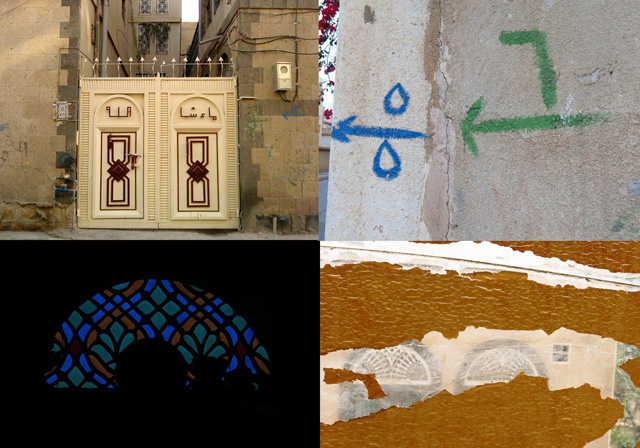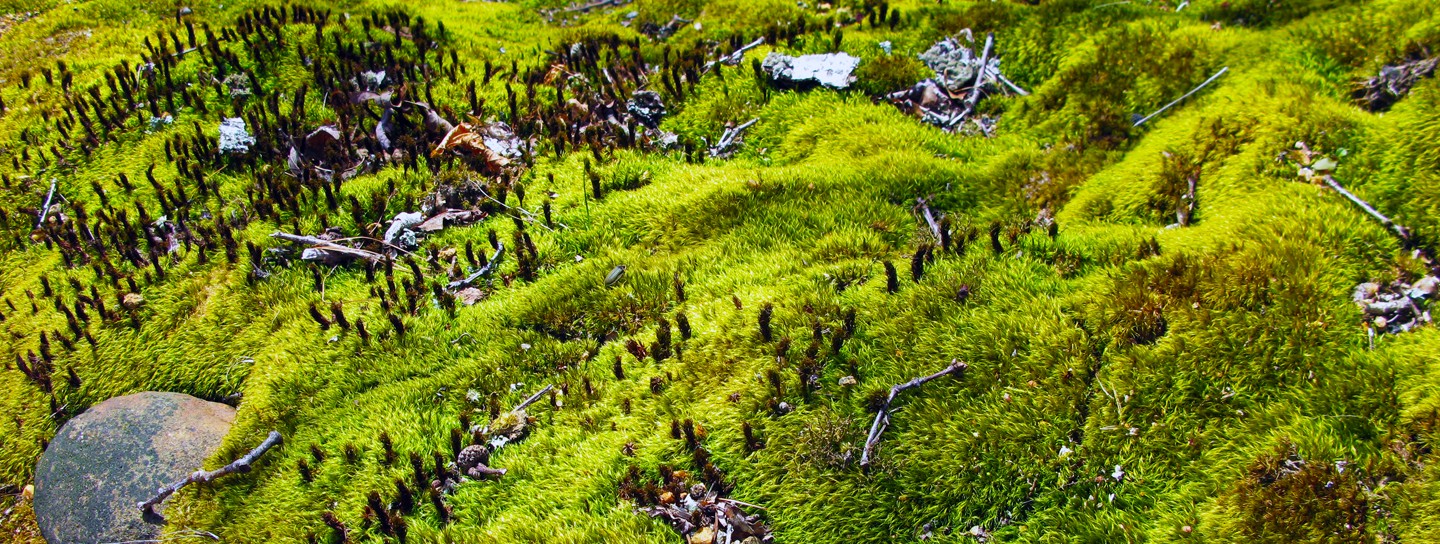(published January 13, 2013 on Hyperallergic)

Reference images sent by Salwa Aleryani to Lex Braes during their initial conversations about collaborating (images courtesy the artists)
One aspect of all of artists’ workshops and residencies is that in making work side by side, artists inevitably begin to understand each other despite their differences. Empathy is a fundamental ingredient in most art, and while individual works are vastly different from each other, much art confronts and offers unique answers to such essential questions as, what does it mean to be human? Artists are vital to easing political friction because by fostering a vision and purpose, they can dissolve borders and provide a psychic geography.
Triangle is a decentralized global network of artists and arts organizations that recently celebrated its thirty-year anniversary. It was founded by artists and continues to be run largely by them. Its objective from the beginning was to connect artists across borders in order to challenge their regular studio practices, engage them in their processes, and foster an intense dialogue about why they’re doing what they’re all doing in their corners of the world.
As the director of Triangle Arts Association in New York, I am quite familiar with the challenges and rewards of pulling off a workshop involving 25–30 artists for two weeks. Our most recent workshop, in September 2012, included thirty artists from twenty different countries coming together in Dumbo, Brooklyn. One common problem that organizations in the global network face when planning these types of events is obtaining artists’ visas; this has increased in complexity each year that I’ve held my position. This past fall, our artist from Ethiopia couldn’t make the workshop. He wrote to us describing the situation:
I am afraid to say that but I have very disappointing news. I went to the American embassy to process my visa application and the visa officer told me that she is not convinced that I will come back after the workshop. She told me that without even looking at my documents.
Berhanu Ashagrie Deirbew is an accomplished artist and professor, and it was a sincerely missed opportunity that he couldn’t attend.
Another visa mishap last year led to a fascinating collaboration. Originally, one of our invited artists, Salwa Aleryani from Yemen, couldn’t participate in the workshop. She wrote to us:
I’m sad to say I don’t have good news. I had an appointment on Saturday and was supposed to receive the visa Sunday and travel today but unfortunately because of the events that took place in the vicinity of the US embassy here in Sana’a [news story for reference], my appointment was cancelled and the consulate announced an emergency closure for security reasons and will not re-open until the 29th of September.
In order to fill her slot at the last minute, we asked New York–based artist Lex Braes to participate. Braes is a longstanding Brooklynite with a studio in the Navy Yards who had previously participated in one of our workshops. After some consideration, Braes said that he would only participate if he could somehow collaborate with Aleryani. He contacted her and an intense email and Skype dialogue began. (Skype is partially blocked in Yemen.) Braes described the process:
We found ourselves discovering what common ground we shared, which we would exploit over the following 10 days. This tentative connection (socio-cultural distance, physical) enabled us to keep Salwa’s US residency an ongoing activity, at least metaphorically; her artistic presence was felt, if not physically present. My primary purpose was to discover ways to connect with Salwa’s creative expression and in such a short period of time. The idea of a transformative experience was very much on our minds. In 1986 I had an international residency cancelled on me due to similar political forces beyond my control: my South of France retreat never happened thanks to political fallout following the US bombing of Tripoli, Libya. This personal disappointment allowed me a keener empathy for Salwa’s situation.
Aleryani elaborated on the exchange that happened between her and Braes:
We were in our same environments but in a way we were “in each other’s shoes.” Navigating space differently and viewing it from a different standpoint and everything that was produced in between was an outcome of that. In the aftermath we both took something different out of it, but essentially the same, which is having new thoughts or visuals that stayed with us and drove us towards one thought/piece or another. To me this collaboration in and of itself was an intervention, a gesture in time and situation, a “creative approach” questioning and examining, perhaps even a DIY utopian resolution to our borders, circumstances, expected or sudden; a reevaluation of our relationship to residencies and the unexpected encounter of another artist, outside or inside the frame of a residency. The result in the space was an outcome of this, transported and interpreted in an attempt to materialize.
Braes continued:
The workshop was underway for a few days before I arrived and already Salwa’s space was being appropriated with her immediate neighbor’s spillover. It became clear to me that the collaboration would be about my defending then defining Salwa’s territorial space and rights. That our neighbor in question was from Israel gave the frisson a contemporary urgency with obvious analogous proportions, perhaps a chance to talk about cultural difference, how to approach such tensions in a way that would offer an opposite resolution. This tension over territorial rights became a dynamic for me to creatively exploit in our collaboration; it became a factor for me to acknowledge — the socio-political Middle East situation was evidently being played out in caricature, like an absurdist stage sketch, stereotypes in microcosm right here in the workshop. How to transform this?
On open studio day, the collaborative piece was unveiled: a doorway you could see through but not pass through and a suspended floating window motif that you couldn’t see through. Braes used straw and plaster for building material, as they are often used in Yemen; in this piece, however, their purpose was isolated into temporary fragments. Braes said, “Fragments became the language of the installation, like remnants of something already lost before it came into being.” A statement written by both artists accompanied the artwork.
After watching this exchange and collaboration firsthand, I became interested in other, similar situations. I discovered a Triangle workshop in Ramallah, Palestine, in 2009. Syrian artist Nisrine Boukhari was unable to go, so she participated virtually from London, making a video piece called “Between” that was shown in the open studio at the end. Here are her own words about the piece:
This video performance documented my virtual residency (as a Syrian it’s impossible for me to be in Palestine), where I perform in London. I had been in contact for 15 days with the artists and the organizers in Ramallah through the internet. I performed from London in the opening day and I asked them before to install a transparent cube in a dark space and to write one sentence in Arabic and I wrote the sentence in English at the same time.
The sentence was: between here and there between no where
Boukhari explained, “I chose this sentence without a verb to demonstrate how there is no act, no movement. And this is the case between Syria and Palestine.”
Boukhari is now studying in Vienna, getting a master’s degree in social design. She considers her work an effort to forget about borders, which are always changing in her region because of war and instability. She believes she can be most effective in her work by combining participatory projects, socio-political artistic research, and contemporary art practice.
I also came across another collaborative piece by artists Youmna Chlala (New York) and Jeanno Guassi (Berlin). Their situation was different because they were not denied access to enter each other’s countries, but they collaborated virtually on a piece exploring the notion of virtual residency and the idea of home. The work, a video and installation project as well as a publication, is titled “Home Sweet Home NY/Berlin.” It’s about moving between the real and imagined intimate spaces of their respective homes. “By activating a home-space, we interrogate the relationships of self/object/ space and respond to a ritual of location that is rooted in the belief that home remains both a search and a dream,” the artists wrote.
Chlala and Guassi wrote to each other every morning with instructions, or what they called a “prompt.” Both then executed the work and documented it. By doing this, they learned a lot about their histories and neighborhoods. The prompts included things such as, “take all of your bedsheets, towels and blankets and make an installation that describes why & how they are important to you” and “take tissue paper and cover part of your window and take images. Describe the outside and the hidden parts.”
Lex Braes wrote something succinct about his collaboration with Salwa Aleryani that I feel exemplifies all of this work:
All the imagery sent from Salwa already held within me, a connection, an attraction, although I wasn’t consciously thinking about [it] when we collaborated. The universality found in symbolic forms, how they carry meanings beyond their origins and transcend their cultural boundaries, and how I found them personally relevant and meaningful in my studio practice.
Anthropologist Wade Davis once said, “We believe that politicians will never accomplish anything … but we think that storytelling can change the world.” All of these works have stories behind them that transcend borders. Davis also said, “If human beings are the agents of cultural destruction, we can also be, and must be, the facilitators of cultural survival” — something I think these artists demonstrate so well.
